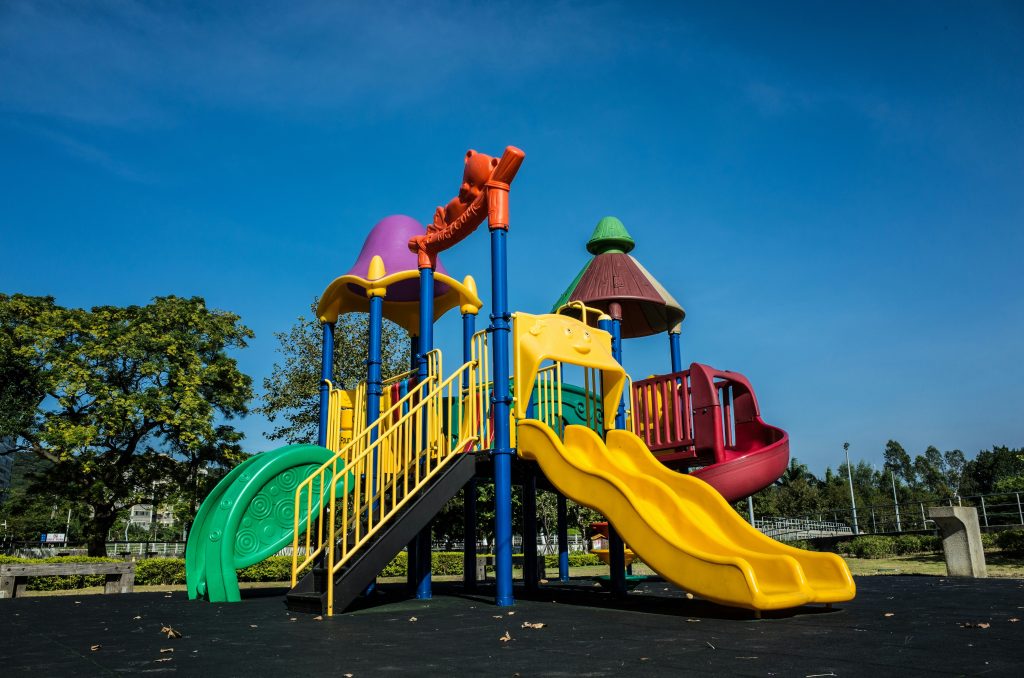In an age increasingly dominated by digital entertainment, the importance of engaging, active outdoor play for children’s development cannot be overstated. Interactive play equipment offers a dynamic and stimulating way for children to learn, grow, and develop essential skills in a fun and engaging environment. More than just a source of entertainment, interactive play areas designed by experts like Image Playgrounds can transform ordinary spaces into exciting, fun yet challenging playgrounds where learning is paramount across the curriculum. This guide explores the multifaceted benefits of interactive play equipment, highlighting how it fosters fitness, agility, social skills, cognitive development, and overall well-being.
The Power of Play: A Foundation for Growth
Play is a fundamental aspect of childhood, providing children with opportunities to explore their world, experiment with new ideas, and develop essential life skills. Interactive play equipment takes this a step further, offering structured and stimulating activities that enhance specific developmental areas.
- Physical Development: Interactive play equipment encourages physical activity, helping children develop gross motor skills, coordination, balance, and strength.
- Social-Emotional Development: Playgrounds provide opportunities for children to interact with their peers, and learn to cooperate, negotiate, and resolve conflicts.
- Cognitive Development: Interactive play equipment can stimulate cognitive development by challenging children to solve problems, think creatively, and use their imaginations.
- Emotional Development: Playgrounds create a great space for developing emotional development, for example; children feel a sense of achievement after climbing to the top of a climbing frame.
Enhancing Physical Fitness and Agility: Moving and Grooving
One of the most significant benefits of interactive play equipment is its ability to promote physical fitness and agility. Children naturally love to move, and playgrounds provide a safe and engaging environment for them to run, jump, climb, and explore.
- Climbing Structures: Climbing frames, walls, and nets challenge children’s strength, coordination, and problem-solving skills. Climbing improves upper body strength, core stability, and spatial awareness.
- Swinging Elements: Swings promote balance, coordination, and cardiovascular fitness. The rhythmic motion of swinging can also be calming and therapeutic.
- Balancing Beams and Stepping Stones: Balancing elements help children develop balance, coordination, and concentration. They also encourage children to take risks and overcome challenges.
- Obstacle Courses: Interactive obstacle courses provide a fun and challenging way for children to improve their overall fitness and agility. Obstacle courses typically involve a variety of activities, such as running, jumping, climbing, crawling, and balancing.
- Robust Materials: Using great design ideas that are robust ensures children can feel secure and happy when using the equipment.
- Fitness and Fun: By combining fitness with fun, children are more likely to develop a lifelong love of physical activity.
Fostering Social and Emotional Well-being: Building Relationships
Interactive play equipment provides a valuable space for children to interact with their peers, develop social skills, and build emotional resilience.
- Cooperative Play: Many interactive play elements encourage cooperative play, requiring children to work together to achieve a common goal. This helps children learn to communicate, negotiate, and compromise.
- Turn-Taking and Sharing: Playgrounds provide opportunities for children to practice turn-taking and sharing, essential social skills for building relationships and navigating social situations.
- Conflict Resolution: Playgrounds can also be a place where conflicts arise. Learning to resolve conflicts peacefully and respectfully is an important life skill.
- Empathy and Compassion: Observing and interacting with other children on the playground can help children develop empathy and compassion.
- Confidence Building: Successfully navigating challenges on the playground, such as climbing a difficult structure or resolving a conflict with a peer, can help children build confidence and self-esteem.
- Social Skills: Creating the opportunity for developing social skills is essential for creating a fun and challenging environment for children.
Stimulating Cognitive Development: Learning Through Play
Interactive play equipment can also stimulate cognitive development by challenging children to think creatively, solve problems, and use their imaginations.
- Problem-Solving Challenges: Many interactive play elements present children with problem-solving challenges, encouraging them to think critically and find innovative solutions.
- Imaginative Play: Playgrounds can be designed to incorporate elements that stimulate imaginative play, such as castles, ships, and houses. These elements provide a backdrop for children to create their own stories and scenarios.
- Spatial Awareness: Climbing and navigating through play structures helps children develop spatial awareness and understanding of their environment.
- Sensory Exploration: Playgrounds can be designed to incorporate sensory elements, such as sand, water, and textured surfaces, to stimulate children’s senses and promote learning through exploration.
The Importance of Great Design Ideas: Creating Engaging and Effective Play Spaces
The design of interactive play equipment is crucial for maximizing its developmental benefits. Well-designed playgrounds are safe, stimulating, and accessible to children of all abilities.
- Age-Appropriate Design: Play equipment should be designed to be age-appropriate, providing challenges that are both stimulating and safe.
- Inclusive Design Principles: Playgrounds should be designed to be inclusive, catering to children of all abilities and backgrounds.
- Variety of Play Elements: A well-designed playground incorporates a variety of play elements to cater to different interests and abilities.
- Natural Elements: Incorporating natural elements, such as trees, rocks, and water features, can enhance the appeal and educational value of a playground.
- Tried and Tested: Great design ideas that are tried and tested help ensure they are the most fun, safe and educational.
- Learning Across the Curriculum: Creating outdoor play equipment that enhances learning across the curriculum makes the experience even more beneficial.
The Role of Quality Materials and Construction: Ensuring Safety and Longevity
The safety and durability of interactive play equipment are paramount. Choosing high-quality materials and ensuring proper construction are essential for creating a playground that will last for years.
- Durable Materials: Play equipment should be constructed from durable materials that can withstand the rigours of constant use and exposure to the elements.
- Safety Standards: Play equipment should meet all relevant safety standards to minimize the risk of injuries.
- Professional Installation: Proper installation is crucial for ensuring the safety and stability of the play equipment.
- Regular Maintenance: Regular maintenance is essential for keeping the playground in good condition and identifying any potential hazards.
- Timber playgrounds: Timber playgrounds are robust, strong and well-designed, so make a fantastic safe space for children to have fun and develop.
Creating a Fun and Challenging Environment: Maximising Engagement
Interactive play equipment should be designed to be both fun and challenging, keeping children engaged and motivated to play.
- Variety of Activities: A well-designed playground provides a variety of activities to keep children interested and engaged.
- Progressive Challenges: Play equipment should offer progressive challenges that allow children to gradually develop their skills and abilities.
- Opportunities for Exploration: Playgrounds should provide opportunities for children to explore and discover new things.
- Social Interaction: Interactive equipment promotes social interaction so children can learn to enjoy sharing, caring and communicating.
Conclusion: Investing in Children’s Future Through Play
Interactive play equipment offers a powerful tool for enhancing children’s development. By promoting physical fitness, fostering social and emotional well-being, and stimulating cognitive development, playgrounds can help children grow into healthy, confident, and well-rounded individuals. Investing in well-designed, high-quality interactive play equipment is an investment in children’s future, providing them with the opportunities they need to thrive and reach their full potential. Choose tried and tested equipment that enthuses kids to bring out their best. Ensure that the provider you choose delivers a full service, from initial consultation, design and planning, through to manufacture and installation, so you can assure quality at all stages. When implemented, this exciting, fun yet challenging equipment where learning is paramount across the curriculum will enrich lives.
The information mentioned within this blog is intended to act as a guide only. Always seek advice from a professional on this topic.

Oliver Smith is an experienced blogger at Grammar Globe, Oliver Smith, an expert in English grammar and a master of wit, brings language to life with his playful take on puns. Through his works, he weaves humor into the rules of grammar, making learning fun and engaging for readers of all ages. Discover language with a smile!”






